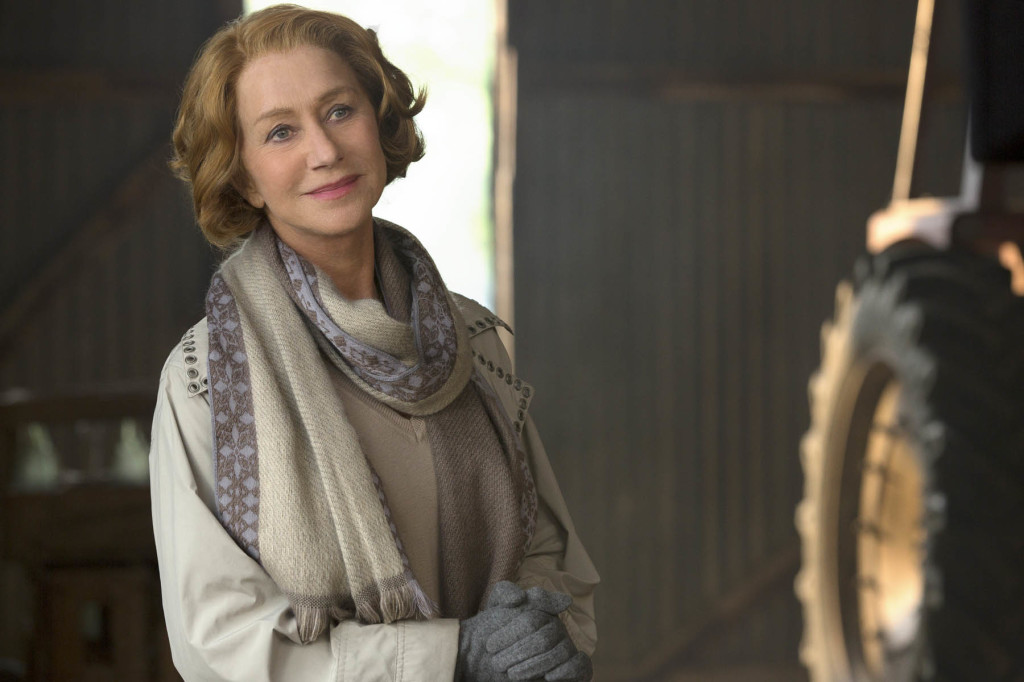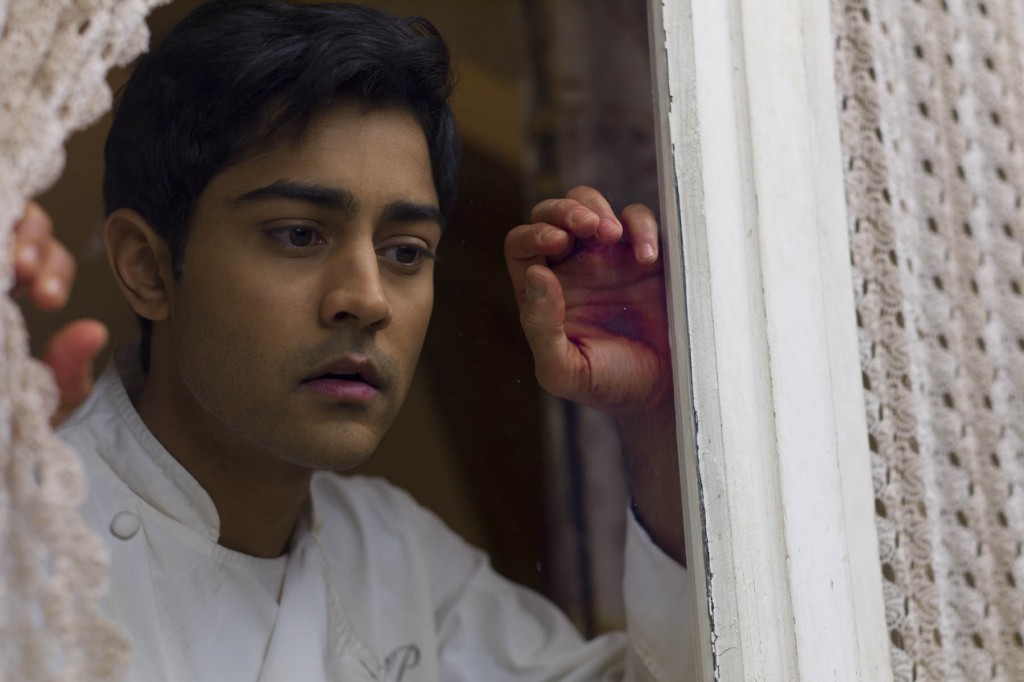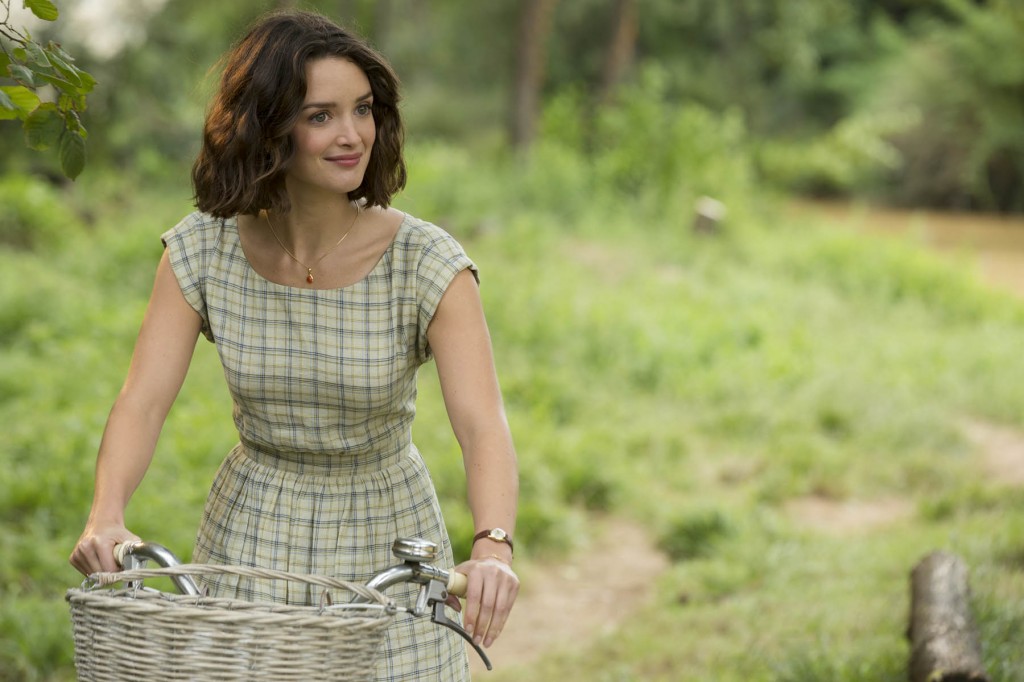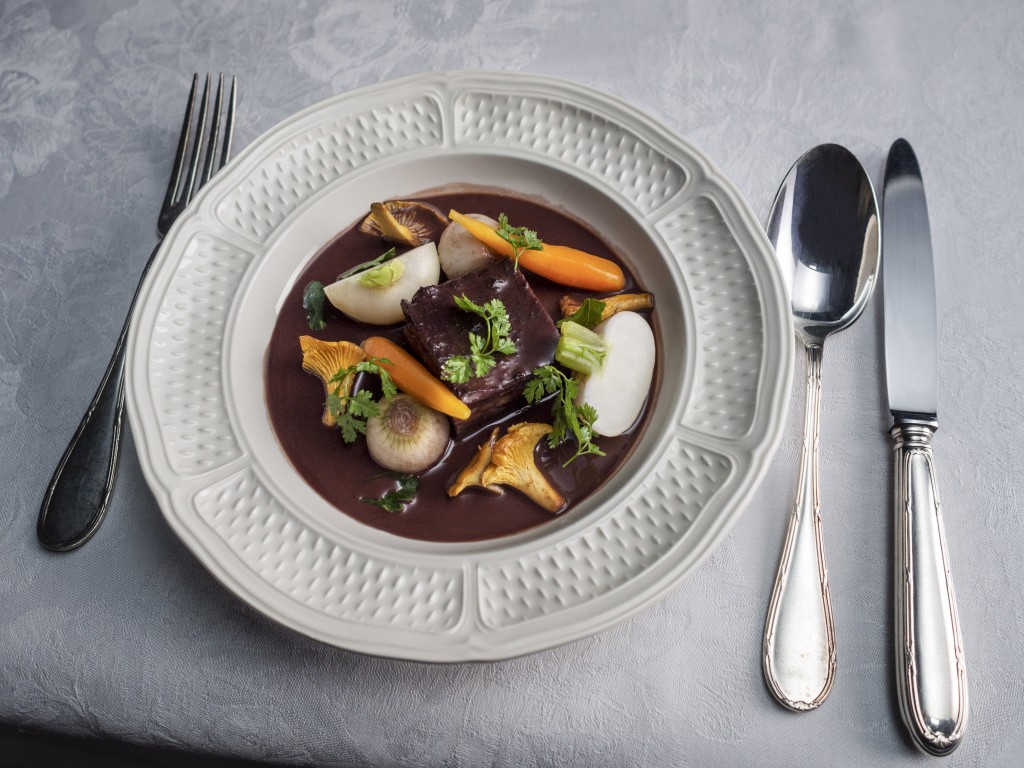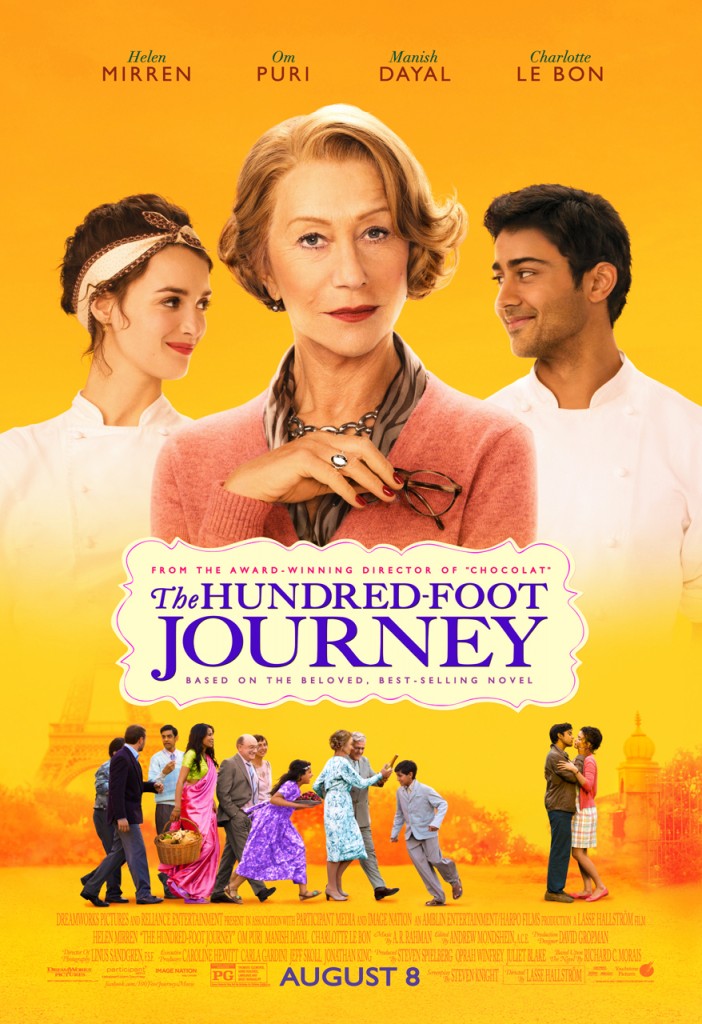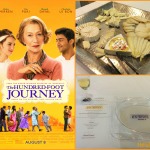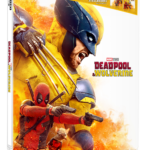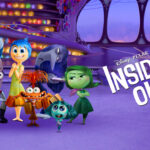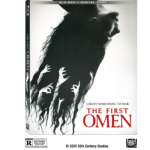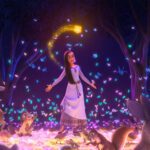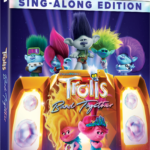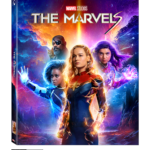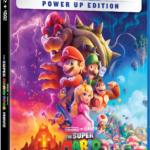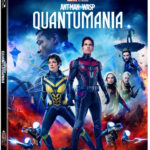“Food Is Memories” an Inside Look into The Hundred Foot Journey
By Erin
*I was invited by Disney as a guest to attend a press junket for the film for purposes of this post. All thoughts remain my own. :)*
You may be asking yourself, what exactly is a Hundred Foot Journey? Richard C. Morais puts it nicely, “A hundred foot journey begins in that moment when you bravely drop what is familiar and cross over into a new realm that is far out of your comfort zone. It is a profound journey, however small in physical distance, that materially changes the course of your life for the better.” This is what happens to one family who was displaced from their native India and find themselves in the south of France, ready to open up an Indian restaurant called Maison Mumbai. This happens to be only 100 feet away from Le Saule Pleureur, a popular classical French restaurant ran by the prim and proper Madame Mallory. The journey begins here once Madame Mallory learns of her new neighbors, only 100 feet away across the street.
The film is centered around food and memories. Take a look at one very special “Food is Memories” moment.
I was ever so lucky to meet some of the cast from this brilliant film bringing people together by food and the memories that it creates. Take an inside look into what the cast has to say about some of their own personal “Food is Memories” moments and other interesting findings about the film.
1. Helen Mirren – (“Madame Mallory”)
First we have Helen chatting with us. Here is a snippet of the conversation we had with her.
What is your favorite French Dish?
Helen: I love French onion soup. Classically made French soup.
The movie has a lot of “Food is Memories” moments. What is your favorite Food is Memories moment?
Helen: Chocolate. I have an incredible memory of the first time I had chocolate. A chocolate Easter egg. I grew up in England after the Second World War, and there was no sugar. I didn’t eat chocolate until I was about 7 years old. So that first taste of chocolate, I remember that very clearly.
(And if you’re wondering, it was the taste and smell of milk chocolate.)
Can you actually cook? Or are you just a tremendously engaging fake in this?
Helen: I’m an engaging fake. Luckily in the movie I don’t actually cook. I run the restaurant. She knows food, and understands food, and employs very, very good chefs. She doesn’t actually cook, herself. She tastes, and judges. But luckily, she doesn’t cook, because I would reveal myself very rapidly to be somewhat inept. The only thing I have to do is to break eggs.
2. Manish Dayal – (“Hassan”)
Next we have Manish Dayal at the round table with us, to give us the scoop on some of his thoughts.
Can you cook and did you have to have any special training for the making of the film?
Manish: Sadly, I can cook a little bit. I went into it not being able to, of course, understand the art of cooking and cuisine and now I think I have a better understanding of those things. We had in the kitchen training. Understanding sort of the nature of a kitchen in France versus the nature of a kitchen in India is very different, and I think more importantly what I had to learn was understanding how it works, rather than how to make the food, because of course we did both but understanding like how to function in a kitchen is very important.
What food would you serve if you wanted somebody to understand where you were from?
Manish: Where I was from? Fried chicken. I’m from South Carolina. But if you mean ethnically where I was from…
What role does food play in your life?
Manish: Huge, because food, just like in this movie, you know, it brings cultures together, but it also sort of is the reason why our families used to get together when we were kids, like my aunt and uncle would come over when my mom was making this, or we would go over there when they were making that, you know, that’s what food is, and I went into the whole thing thinking that France and India are culturally the two most opposites, but what I learned through the process is that’s not the case at all. They actually both have a very unique appreciation for food, unlike any other culture that I’ve been sort of been privy to so far, specifically like the French and Indian, yeah, they’re much more similar than you think.
What should viewers take as the message from this film, do you think, take away from it?
Manish: They should take away that you must embrace life’s uncertainty, I think, ‘cause I think that’s what this movie’s about.
If you had to choose your last meal, what would it be, but since that implies that you’re about to be killed, it’s a bit grim. So let’s just say if you could have your perfect dinner, no threat of death, what would it be?
Manish: I’m going to give the real answer, which is chicken fingers. I love chicken fingers. So chicken fingers with honey mustard sauce – so bad – and fries, double crispy fries with mayonnaise.
Manish also let in on one of his favorite food is memories moment and told us about the special omelette that you will see in this film. It was his dads recipe!
3. Charlotte Le Bon – (“Marguerite”)
The lovely Charlotte Le Bon graced us with her presence next.
Can you cook, or was that all imagined?
Charlotte: Yes, Kind of I guess. No. No, it’s like when I have free time, I don’t do a little hollandaise sauce, no. No, it’s just – I’m all right. I know how to do little things, if I want to kind of impress when I get people, you know, when people come to my place. But this – I cannot say, like, I’m, “Oh, yeah, I’m a cook. Yeah, look at me. I’m a cook.”
What food would you serve someone if you wanted them to understand where you grew up, and came from?
Charlotte: Oh, I never do that, because it would be really bad food. Quebecois – Quebecois, food from Quebec is not known to be amazing, even though you can eat really, really well in Montreal – it’s crazy, it’s one of the best cities I eat in. Typical Quebec food is like food from people that work in the woods, and it’s potatoes, and meat, and sauce. So you don’t to impress people with that. No, I do something that looks difficult, but it’s not really – like risotto and stuff like that.
What’s the message that you think people should take from the film?
Charlotte: The message – well, it’s – I think everybody’s gonna get, his own thing through it. It’s about so many different things. It’s about different cultures, that when you agree to meet with them, you get stronger. And I really, really think that it is true. It’s about passion. It’s about traveling. It’s about not being scared to just go for it, even though everybody else is telling you it’s impossible. So it’s about love. It’s about going back to the roots, too. And so yeah, I guess, you know, they’re gonna take whatever they want.
What’s a “Food is Memories Moment that you have?”
Charlotte: But food, you know, in the movie, Manish’s character says that food is memories. I don’t even know today if my grandmother’s food is good or not, but for me, it’s just one of the best in the world. And – yeah, and she makes like, super plain meals, like soup, and desserts, and sucre à la crème – you know what it is? It’s like sugar cream, like fudge. It’s like sugar and cream.
Charlotte also let us in on that she would cook French Toast to impress someone, she didn’t read the book version of ‘The Hundred Foot Journey’ since her mom told her not to, Pride is a ridiculous thing and that it is about being a leader. She would love to be in a Tim Burton Film.
4. Lasse Hallström – (Director) paired with Juliet Blake – (Producer)
Last up we had Lasse Hallstrom and Juliet Blake to chat with.
Working on the film, how did it make you rethink the role that food plays in culture, in bringing like different cultures together?
HALLSTRÖM: Well, I think I didn’t rethink. It’s a given that the mix of cultures and the mix of recipe ideas and trying to merge cultures and make them unite, without losing the culture or individual culture quality, I think it’s important. And going into it, it felt like a great message that we should all hold hands and know that we have so much in common, even if we have cultural differences. There’s so much more we have in common than we realize. And knowing that going in, it was a life-affirming message that the script had that I certainly could sign on to.
BLAKE: I grew up in a family of German Jews where you know, German food was my life as a child, and I used to be quite embarrassed about that, because all of my very English friends had very English food and when kids used to come to my house for dinner, I didn’t like the fact that we were different, and yet everybody else, my friends, always used to really appreciate it. And so for me, food in that way has always been quite an interesting way of combining cultures. And Steve Knight who wrote the screenplay and I didn’t know each other before this project but we grew up 125 miles apart from each other in English communities that had a lot of Indian families and it was traditional to have an Indian meal on a Sunday night, and a lot of English people, you know, they go to their local curry house or to an Indian restaurant to have Indian food on a Sunday night. So for me, the whole notion of food as being something that equates to community is really important. And I think it is something that binds people together.
How did you choose when you would want to use Indian music or Indian pop music, classic Indian music, French music’s your regular score, how do you make those choices and how that did that influence each scene that you used them in?
HALLSTRÖM: Another attraction with this story was that I could play around with merging the sounds, the languages. There’s a lot of different languages that are not translated, so it’s another spice, another color of the film that I appreciated, that we could have them shift, which people do, they shift between different languages, especially Indian people, like they have thousands of languages. Just walk 10 ten meters and you have another dialect there. And so that was an attraction. The same thing with music that could underscore, and the differences in the culture and the similarities so we played around a lot with that, and I sat with A.R. Rahman in Los Angeles here and worked out the score together with him. I got an opportunity to sit in his laboratory there and see him come up with ideas, so that was a fantastic part of making this film, that he invited me to the creative process there.
That was the end of our journey with the cast and producers of the film! I hope you enjoyed the conversations and are ready to go see this feast for the senses on the big screen on Friday!
In Theaters THIS Friday, August 8th!
Be sure to follow The Hundred Foot Journey Here:

